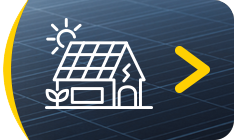- 05 Oct, 2017
- Solar Training , Definitions

To help you with the research and all the necessary steps from planning to implementing your solar project, we have put together a small lexicon with the key terms regularly used in photovoltaics. Here comes the first part of our lexicon, with the letters A to F.
A
ACTIVE SURFACE OF A CELL: The part of a cell which is responsible for the photovoltaic effect when exposed to sunlight.
ADEME: Agency for the Environment and Energy Management (ADEME): The national agency for the promotion of renewable energies, which helps more people accessing it through subsidies for equipment. If you want to read more, feel free to browse our blog for more articles.
ALTERNATING CURRENT (AC): Sinusoidal current electric current which periodically reverses direction (in contrast to direct current (DC) which flows only in one direction) Standard household appliances use AC.
AMORPHOUS SOLAR PANELS: Solar panels that use a certain type of silicon (a-Si, amorphous silicon) which is not cristallized. These panels are lower in efficiency compared to other models but also lower in price.
AMPERAGE: The strength of electrical current in direct current (produced by the solar panels for instance) needed during a certain time period. Measures in ampere (A).
ANGLE OF INCIDENCE: Angle between the incident ray reaching the earth surface and the normal The angle of incidence is an important parameter to know the total radiation which reaches the surface.
APPROVAL: The process of verifying the compliance to quality standards and requirements of a solar panel, a component of a solar installation or of a solar installation on the whole through testing.
AQPV (Alliance for Quality in Photovoltaics): A French quality label which certifies the origin panel (made or assembled in France) and quality of a solar panel through extensive testing.
ARD (Distribution Network Agency): Regional offices of the French grip-operator ErDF.
B
BUYER: An organisation subject to the legal obligation to buy the energy produced by PV installations among others on a national level.
BYPASS DIODE: Diode in the solar module case which prevents the solar cell from overheating when partially or completely in the shade.
C
CELL JUNCTION: Interface between p-type and n-type semiconductor materials in a photovoltaic cell.
CERTIFYING BODY: An indepedendant body that tests and certifies the quality of materials used in solar installations.
CIS: A type of solar panels with thin layers. The initials refer to the components (copper, indium and selenium).
CONCENTRATOR: Method using different techniques which focuses the solar radiation in one specific point in order to increase the captured energy levels.
CONNECTION PROPOSITION: An official document issued by the grid operator to the future energy producer which contains a quote for the connection.
CONSISTENCY: Product consistency describes a product whose technical characteristics or performance meets the standards.
CONSUEL CERTIFICATION: Certification issued by an accredited body which certifies the compliance of a solar installation.
CSTB: The “Scientific and Technical Centre for Building” is a French national organisation in charge of the quality control in the building industry. The organisation also analyses the environmental impact of buildings. It provides certification services and consultancy on the quality and durability of integrated systems such as solar installations.
CZOCHRALSKI PROCESS: A method of crystal growth used to obtain large single crystals of semiconductors by pulling a seed crystal's rod slowly upwards from the melt.
D
DIFFUSE RADIATION: The solar radiation that reaches the surface of the earth after having been scattered by particles in the air and in the clouds.
DIFFUSION ZONE: Part of the semiconductor which was treated by adding impurities to alter its properties.
DIRECT RADIATION: The solar radiation traveling on a straight line from the sun down to the surface of the earth.
E
EFFICIENCY: The efficiency of a system refers to the ratio between its energy input and output. For solar panels, this refers to the ratio between the solar energy and the electricity output. For solar inverters, it refers to the ratio between the energy it delivers and the energy it consumes in operation.
ENERGY BALANCE: The analysis of the energy consumption and production of a house. It enables a precise assessment of the energy needs and production capacity in order to find the ideal solution to save energy.
F
FEED-IN TARIFF: c'est le tarif auquel le gestionnaire reseau reprendre l'electricite produite par les producteurs photovoltaiques. Ce tarif varie selon les specificites techniques de l'installation (integration au bati, puissance)
FINAL ENERGY: Energy a system delivers after conversion and which can be used by the consumer. The conversion process leades to enery loss.
FLASH TEST: Test to determine a module’s peak power within a certain margin of error.
Something’s missing? Do not hesitate to write us anything you would like to add to this lexicon!
All rights reserved.











